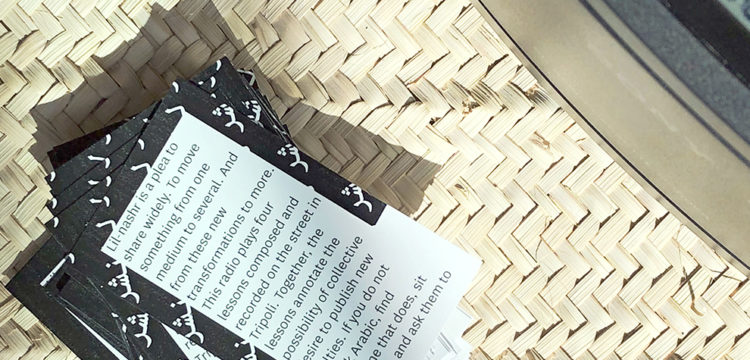Context is Content
“This is not fantasy, this is realism”: a conversation with Studio for Propositional Cinema
Before the lockdown, Studio for Propositional Cinema has been a resident at Fondazione Morra Greco to conceive a site-specific work for Palazzo Caracciolo d’Avellino. Curated by Alessia Volpe, The Storytellers’ Fountain: a tale told by A Gust of Wind in the low and dark rooms is an installation that appropriates the spaces on the first floor and the foundation’s basement. The doubling of the seventeenth-century trompe l’oeil through the use of mirrors on the ground, shaped like the frames of the illusions of the ceiling is accompanied by a voice reading passages from The Storytellers Fountain script, guiding the viewer and moving linearly from one room to another. On the underground floor, the brain of the entire installation, contextualized within the production of SPC, is probably the root of the work: a system of display vitrines with a transparent background like an apparatus of notes/captions/hypertext that refer to the “pieces” produced and articulated upstairs.
All the intentions embedded in Studio for Propositional Cinema’s practice are somehow already made clear by their name: a place to study and to set forth a topic for a discussion, a statement, a proposal, whereas cinema leaves up the space not to be constricted in form. Formally, the tools used to propose are bibliographies, footnotes, appendixes, collective exhibitions, publications, installations and indeed statements where the pronoun used is always “we”. For the series “we wish we did it ourselves” Giulia Crispiani and Federico Antonini took the chance to dig deeper into the composite layers of what Studio for Propositional Cinema is and does.
Federico Antonini and Giulia Crispiani: The name Studio for Propositional Cinema is a statement in itself, that declares and considers all the shifting meanings between studio/study and in reference to cinema as “the most complex/complete/hierarchical” artform, in perpetual tension between the cult of the leader and collaboration among “technical” figures. Cinema is also a formal metaphor, where “words are lenses and mirrors”, is that so? And what about the propositional attitude?
Studio for Propositional Cinema: The word “cinema” opens onto an intersection of various cultural forms—from sculpture, photography, performance, and writing to collaboration, bureaucracy, architecture, economics, and so on. Cinema typically necessitates a synthesis of these forms, although the exact combinations required to indisputably claim the title are somewhat vague. In recent years, multiple technological shifts in production and distribution led to a crisis of terminology in which terms that were previously clearly defined lost specificity. Undoubtedly much was lost in this shift, but this crisis also suggested certain freedoms; we felt that rather than rushing to refine and redefine the vocabulary there was a potential space to suspend cinema’s fundamental elements, its building blocks, and play around with new combinations, discarding some and introducing others in perhaps novel ways. These “propositions” were put forward within the loose framework of the cinematic; a veil to play under.
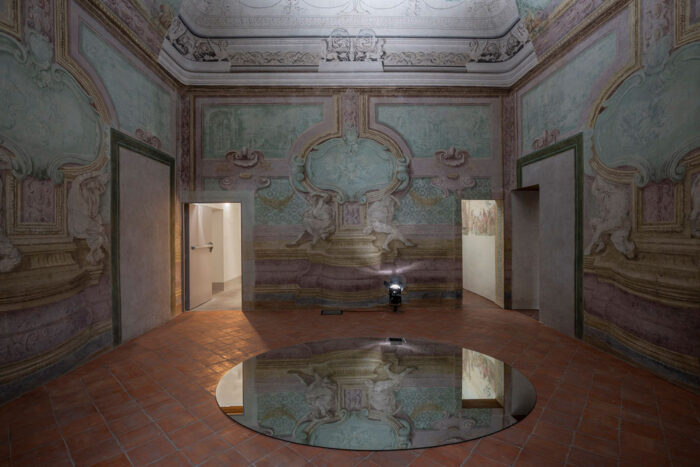
At the same time we see a parallel between editing and movie directing. More than an artist collective we have a director, an editor, a curator. The exhibition in Hannover in relation to a Spectator was basically a programme. Despite both solutions being specific and physiological for your practice, how do you feel more comfortable with publishing or with the spatial/exhibition format?
The model for inhabiting various roles within the field comes from our earlier involvement with DIY music scenes, where it was natural and also necessary to play music but also to organize shows, start labels, release other band’s records, publish zines, play in each other’s bands, etc. The strict divisions between artist, curator, gallerist, publisher, etc. always struck us as counter-productive and alienating, primarily serving the interests of received market-based power structures. So the natural option was to ignore all this labels altogether. Exhibitions and publications are both formats that invite deep engagement, each with their own intimacies. To us they are symbiotic.
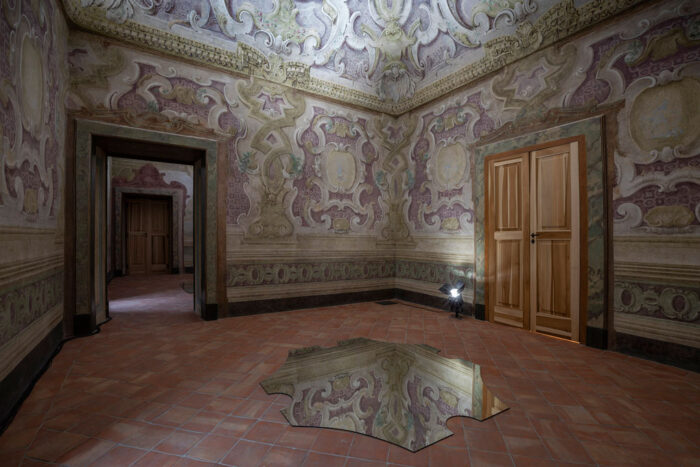
Could we say that your practice materializes as collective statements? What does an anonymous “we” imply in a statement?
More than a collective proper, Studio for Propositional Cinema is a hypothetical stage upon which various statements and characters can be introduced, enacted, and played out. This has often involved collaboration with other artists but also with fictional characters invented within the framework of narratives and situations presented within our work. Anonymity is not a conceit but rather a cloak that allows a multitude of voices and positions to interact, outside of the standard biographical imperatives of authorship.
A Gust of Wind is both a character and a publisher—as if the dialectic functions are shifted into characters. The work at Fondazione Morra Greco is at the same time somehow site-specific and self-standing/autonomous?
A Gust of Wind is a character of Studio for Propositional Cinema, first introduced in our play script & faintly heard (as it sinks, slowly), then appearing again cast both as a narrator and a publishing entity for the Naples exhibition. All of our characters are archetypes, and they can function both within and outside of the confines of a narrative. Our conception of character development is for them to reach the point where they can act together, autonomously and symbiotically, on the stage of life.
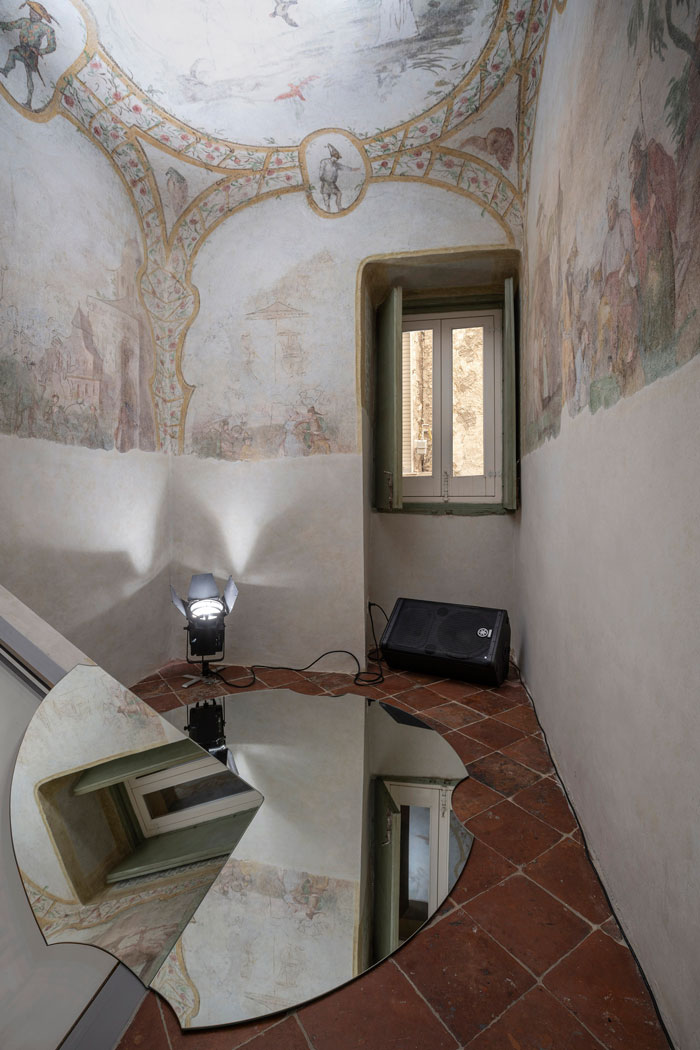
What does it mean to construct tools to build a world where to seek our own imagelessness? What kind of world are we talking about? Can a world of poetry exist without images (if images are “delegitimized and defused by diffusion”)?
The text to which you’re referring asks: “Having already delegitimised images through an inoculating proliferation, numbing frequency, and by the de-articulation of our image-tools’ functions, their social roles, and variegative potentials (having defused them by diffusion), can’t we now, already, envision a world in which we seek our own imagelessness as a means to relieve our image-poverty?” This imageless potential future is not something we’re advocating for but warning against. As the speed and rate of image production has exponentially increased, the control that individuals have over them has diminished to the point that the overwhelming majority of images are distributed on the same few platforms and produced with the same few devices; no longer with cameras but with handheld computers that include image-making functions in addition to hundreds of other uses. These uses are only superficially controlled by their individual operators; they are primarily tools for surveillance and the algorithmized flow of capital. The near-universal rush to transfer image production from cameras to these elective surveillance devices has led to a situation where it is conceivable that a company or government could delete all images and disable all image functions from them instantly. The text to which you refer continues: “We can retain the possibility of making our own images by regaining control of the apparatus of image-making, keeping production recipes and knowledge open-source and available, and building and maintaining networks for their distribution, like how illicit knowledge was retained and passed along in the so-called Dark Ages.” We believe it is more urgent than ever to analyse and to produce images, just as the destabilisation of the truth-value of words makes it more urgent than ever to analyse and to produce language. We do not seek an imageless world, but a world of deliberate images.
The Ancient Knowledge Survival Kit—a text recently published by A Gust of Wind—ends with the desire to “re-tune the timbre of their songs to fit our ears” in “a siren-song guiding from the darkness.” It seems as if the whole proposition implies a guiding agency. Does this have anything to do with the artist’s responsibility?
The Ancient Knowledge Survival Kit text is an attempt to project logical conclusions from trajectories currently at play in our culture. All forms of cultural speech (image production, music, cinema, publishing, etc.) have systematically found themselves at crisis points where they are grappling with their own obsolescence and potential extinction. The promised freedom potential of the digital across these forms gradually ushered each to a point of fundamental unfreedom. By simultaneously analyzing the driving forces at play in each of those trajectories, it quickly becomes legible as an interconnected land grab for control over what we say and where and how we can say it. Whoever controls this language controls the past, and therefore our future. In the moments before we completely lose this control we must be diligent in re-learning and retaining control of future-obsolete forms (photography? printing? sound recording?) and in trying to preserve this knowledge for a future that doesn’t seem to want them, but may soon need them. This is not simply a question of artist’s responsibility, it’s the responsibility of any citizen desiring agency in political and social contexts increasingly hostile to freedom. This is why, even if we depict the future in mythological or fictive contexts, we affirm that “this is not fantasy, this is realism.”
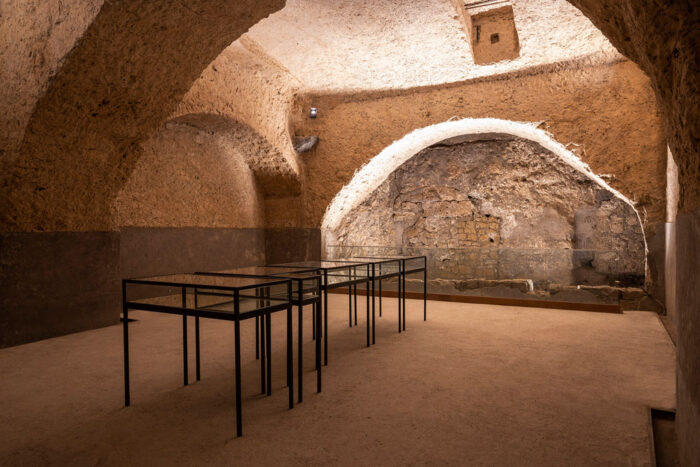
Formally, your way of writing is based on details where everything seems pondered. From the paragraphs’ numbering to the punctuation (many parentheses), to alphabetical indexing of the keywords that build up your vocabulary, and the use of upper and lower case. Are we over-structuring or is there a conscious variation of register? Lawrence Weiner basically no longer uses any lowercase, while herman de vries never used uppercases. This polarity exemplifies a contrast between verticality and horizontality, hierarchies and so on. In the titling of in relation to a Spectator: you never use the English norm, and the title itself begins with a lowercase, why so?
Language is a playground. Attention to its contours is an act of resistance, but also of great care and joy. Fascists are attuned to the political ramifications of punctuation; so must we be.
You think through contracts (legal and non legal) and instructions to use language. What relation are you trying to establish with the spectator?
Both the form and content of our work is shaped by given contextual characteristic which are used as structuring principles (architectural, temporal, financial, social, etc.) The art system pretends to operate somewhat outside of the legal conditions that pervade most industries, but this is an illusion, and the law always sides with those with power and legal knowledge (i.e. money). Our daily lives are also underpinned by implicit legal realities that go mostly unnoticed until too late—for example, our wholesale sell-off of privacy and author rights to corporations via Terms of Use Agreements that seem too inconvenient to read or futile to dispute. We are firstly trying to heighten awareness of these implicit agreements by making them present, often to the point of absurdity. The Focal Vocabulary Index facilitates a financial transaction that underscores the motivations for participation in a formalized global art market, partially displacing the speculation economy for one of trust and participation. We’d all be wise to continue questioning why regulating the trust economy is so wholly resisted, and whom this really benefits.
in relation to a Spectator is at the intersection between media and language theory. The function of scripts, of inscriptions, of scenographies and of durations become important. How do “scripts desire objecthood”? If the film is in the script and the exhibition is in the project, could we say this to be an attempt to free the screenplay from the utility/realization the telos of actually making the movie?
Pasolini grapples with the problem of the delicate lines between the screenplay and the cinema on one side and literature on the other. He writes that, in order for a screenplay to remain a screenplay (and not a work of literature that is “writing through the technique of the screenplay”), it must retain a “continuous allusion to a developing cinematographic work”. It must remain “a structure endowed with the will to become another structure”, a passage that employs the reader as an accomplice whose “representational imagination” completes the operation through the visualization that the screenplay requests of the reading-act. In other words, a screenplay is a screenplay only as long as it remains a potential film. Of course, once it does become a film it becomes primarily an index to the film that it became; by accomplishing its goal it relinquishes its charge of potentiality. We are interested in two aspects of this formulation; firstly, the request for the reader/viewer to act as accomplice in what Pasolini calls a “special collaboration” between the script and the subjective visualizations of its readers, and secondly, the open-endedness that can be retained by not claiming a finished form, by leaving open endless possible future iterations and adaptations. This means that the trajectory of the script is not completed by its production, but that the script stays in play for new interpretations, and additionally that all iterations can immediately become new scripts.
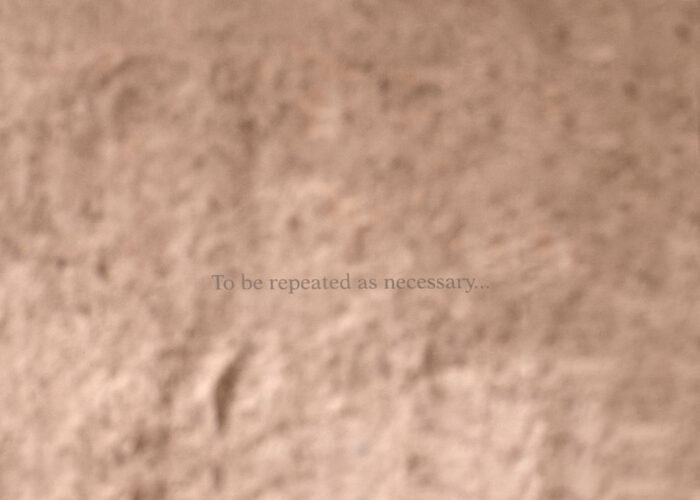
And if stories are blueprints and scripts are projects, in this speculative approach, the temporary vector leans more towards a mythopoesis for a future or revival of myths from the past? In terms of making new myths or looking back and re-learning from the past…
Both. Like masks, myths and fables are hollow vessels waiting to be filled by their users. And like masks, the stories that they tell can vary wildly, depending on the intentions of those concealed behind them. Their hollowness makes them susceptible to ill-intentions and their seeming ostensible innocence provides a cloak for hiding these intentions. As such they are ideal vehicles for the transmission of ideology. It is no coincidence that these ideological marionettes are the material of our childhood; they are how we are taught to behave and believe, and what to fear. We feel that by inhabiting these forms we can attempt to understand how ideology is and has been replicated within our culture, and how we can re-engineer these forms for new aims, to imagine our way out of the inevitable. In end times we must learn how to leave stories for a future that may not include us.
In the basement of the Fondazione we find an articulation of vitrines with captions—again transparency—which seems to be an appendix to the exhibition but, following the hierarchical and systemic writing methodology of SPC, it looks more like a head / control room, semantic and allegorical typographic illustration of what happens upstairs. Again, the discourse of the blueprints returns, in this case architectural, given that the multiple structure of the vitrines mimics the upper floor’s plan, where the mirrors and the audio track have been installed. The present and constant element in The Storyteller’s Fountain is the orchestrated rhythm that guides the cognitive and physical movements that the viewer must implement; vertically from the basement to the second floor and back, and horizontally to follow the movement of the items in the rooms. Is that so?
The vitrines in the basement articulate a list of Assembly Guidelines for building an Ancient Knowledge Survival Kit. These guidelines are “1. Diagnose the future by extrapolating logical conclusions from the tendencies of the present. 2. Find tools dormant within the existing culture to imagine a way out of the inevitable. 3. Examine the past to find prototypes from which to begin. 4. Draw blueprints for structures that facilitate the imagination of alternate potential futures. 5. To enact the impossible makes it plausible. Assemble small groups in which such futures can be rehearsed; rehearse until the plausible feels probable. 6. Place the enactments within the culture so alternative realities appear as a home that others may desire to inhabit. 7. Use the visual to facilitate the imagination of alternate futures within the experience of the present. 8. Condense accrued information into comprehensible and replicable blueprints for the future. 9. Record and synthesize past attempts and disperse them through culture to be replicated and reimagined by others. To be repeated as necessary…” Each element of the construction of the exhibition is used as an example of one of these points. But they are only examples; these guidelines may be used as a methodological blueprint for further work by us, but also by anyone.
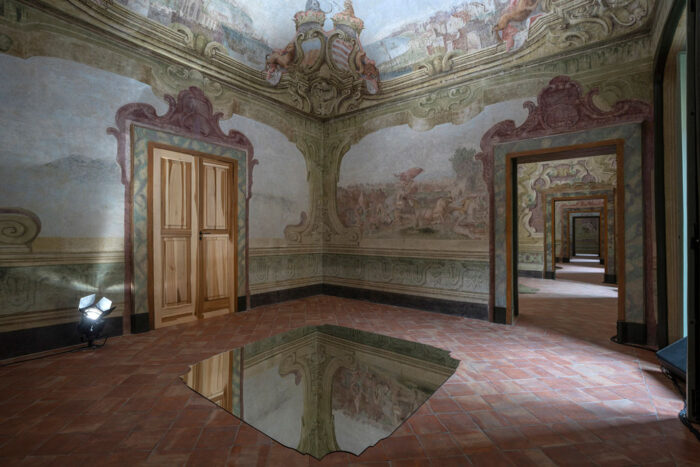
The exhibition script is loosely based on Giambattista Basile’s Arethusa, which was composed and published in Prince Marino’s honour. As court writer, Basile’s work was crafted for and destined to the Neapolitan courts, as a specific kind of entertainment based on courtesan conversational rules. The script had to be adaptable to the circumstances and had to avoid unpleasant reading of the bystanders. That specific audience had to be satisfied. As “context is content” your final scene is also confined in the space of the Palazzo, both in terms of formal choices and intelligibility. I often wonder if there will ever be a chance for a certain art to leave the palace, and if yes how? Who is your audience? Or the other way around, if “this is not fantasy, this is realism” is the palace ever real enough?
The story of The Storytellers’ Fountain is situated in a history of narrative adaptation that, by the time Basile wrote his version of the Arethusa myth, had already included Ovid, Virgil, and many others. The nature of stories is that, once they are released into the world, they are available for adaptation, through refinement or perversion, and their nature no longer remains in the author’s control. This is just one example of how this story may be adapted, and likely will not be the last. We can only hope that this version is relevant now, and may be useful in the future. But further, we view all artworks as potential scripts for further adaptations; this is how they stay alive. The exhibition at Fondazione Morra Greco was an explication of a set of proposals about how we might work together to resist our “collective suicide mission”. Upstairs it presented itself in the costume of a fairy tale, in the basement as a set of suggested production and distribution tactics. We used the Arethusa myth as a shortcut, and simultaneously offer it as a potential shortcut for further development. The market-centric claim to authorial exceptionalism removes artworks from the discursive field and places them in a graveyard.
Pasolini also wrote about death being the framing device of the meaning of a person’s life; until death the language of our lives remains in potentia, a “chaos of possibilities” that remains modifiable by future action, good or bad. It may require our extinction to understand the meaning of the collected collective actions of the human species, but we can currently extrapolate that our story will look quite abysmal. To resist our extinction is to fight for a better ending to our story than the one we can, from this viewpoint, logically anticipate. Fighting to alter our narrative’s course may well prove futile, but it may be the only form of hope we have left.


